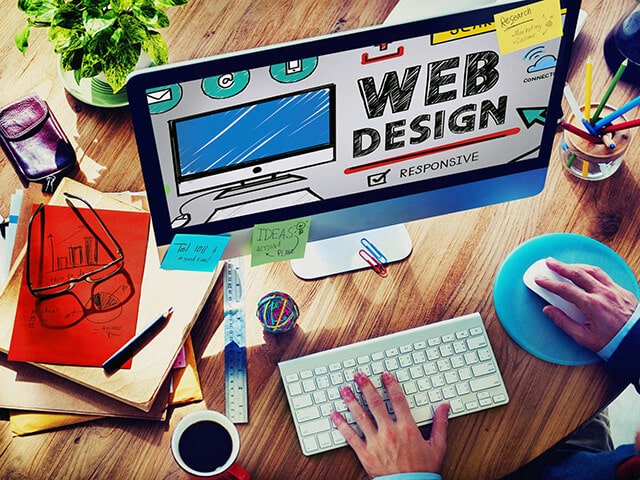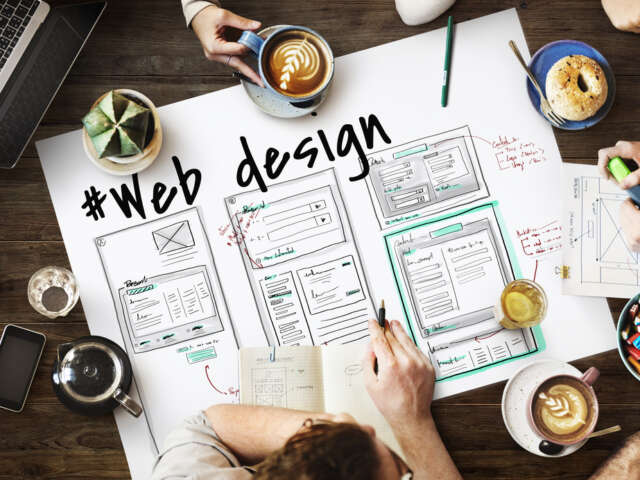About Web Design

Web design is the process of planning, creating, and maintaining a website. It covers everything from the initial planning of the site to the coding and design of individual web pages. A successful web designer needs to have a good understanding of both the technical and creative aspects of web design.
What Is Web Design?
Web design is the process of creating websites. It includes everything from planning and creating the website’s layout to adding content and making it function. Web designers use a variety of tools, including HTML, CSS, and JavaScript, to create a website.
Most people think of web design as simply how a website looks. However, there is much more to it than that. Good web design takes into account the user’s experience when using the site. It should be easy to navigate and find what you’re looking for. In addition, the site should be visually appealing and organized in a way that makes sense.
While some people can create a website on their own, most businesses hire web designers to do the job for them. This is because it takes time and skill to create a well-designed website.
The Basics Of Web Design
Web design is the process of creating websites. It encompasses several different aspects, including web page layout, content creation, and graphic design.
Web designers use a variety of tools to create website designs, typically involving a combination of HTML, CSS, and JavaScript code. For example, HTML (HyperText Markup Language) is used to structure content on web pages, CSS (Cascading Style Sheets) is used to style that content; JavaScript is used to add interactivity to web pages.
In recent years, responsive web design has become an important part of web design. This approach aims to create websites that look good on all devices, from small mobile phones to large desktop monitors. Responsive web design is achieved through a combination of flexible layouts, media queries, and flexible images and videos.
The History Of Web Design
The history of web design can be traced back to the early days of the internet in the late 1960s. The first website was created in 1971, and the first web browser was released in 1990. Web design has evolved significantly since then, with new technologies and trends emerging every year.
Today, web design is a complex field that encompasses everything from user experience (UX) and user interface (UI) design to front-end development and content strategy. Good web design is essential for any business that wants to succeed online, as it can help create a positive first impression, drive traffic and conversions, and build brand loyalty.
While the history of web design is relatively short, it has come a long way in a short amount of time. With so much still to learn, it’s an exciting field to be involved in.
The Future Of Web Design
Web design is an ever-evolving field. The way we design and build websites has changed a lot in the last few years, and it will continue to change in the future. Here are some of the trends that we think will shape the future of web design:
1. More focus on user experience (UX): In the past, web designers have focused mainly on making websites look good. However, more and more businesses are realizing that UX is just as important as visual design when it comes to keeping users happy and engaged. We expect to see more emphasis on UX in the future, with designers working closely with UX experts to create websites that are both beautiful and easy to use.
2. Increased use of responsive design: With the proliferation of mobile devices, it’s become increasingly important for websites to work well on all screen sizes.
The Benefits Of Web Design
There are many benefits of web design. A well-designed website can help a business to attract and retain customers. It can also help to build trust and credibility with potential and current customers. A website can also be a great marketing tool, helping to promote and sell products or services.

A well-designed website can also help to improve search engine rankings, making it easier for potential customers to find the business online. A good design can also make a website more user-friendly, helping visitors to navigate the site more easily and find the information they are looking for.
Web design can also be used to create a more professional image for a business, which can help to boost sales and encourage people to recommend the company to others.
The Challenges Of Web Design
When it comes to web design, there are a lot of challenges that come along with the territory. First and foremost, you have to make sure that your website is easy to use and navigate. If people can’t figure out how to get around your site, they’re not going to stick around for very long. Secondly, you have to make sure that your site looks good. People are visual creatures and if your site looks like it was put together by a five-year-old, they’re not going to take you seriously. Lastly, you have to keep up with the latest trends. Technology is always changing and if you’re not keeping up with the latest trends, your site is going to look dated very quickly.
Conclusion
As you can see, web design is a complex and nuanced field. There are many different aspects to consider when designing a website. However, by keeping the above principles in mind, you can create a beautiful and effective website that will engage and inform your visitors.
